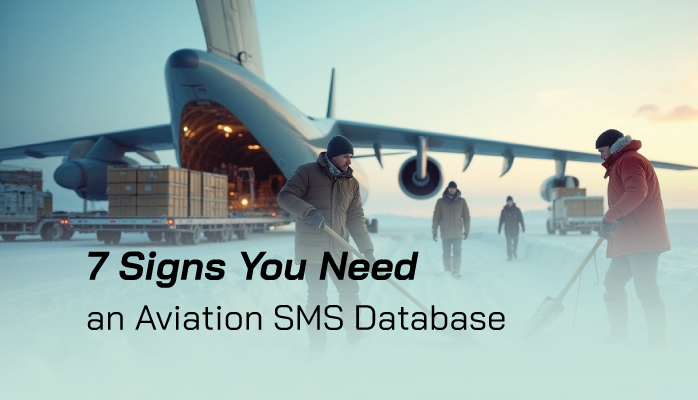Origin of Formal Aviation SMS Requirements

Aviation safety is not a new concept. Unless you have been living under a rock for the past dozen years, you will know that the International Civil Aviation Authority (ICAO) mandated formal aviation safety management systems in November 2006.
At a minimum, these aviation safety management systems (SMS) required that the system:
- Identifies safety hazards;
- Ensures that remedial action necessary to maintain an acceptable level of safety is implemented;
- Provides for continuous monitoring and regular assessment of the safety level achieved; and
- Aims to make continuous improvement to the overall level of safety.
From among the ranks of pilots and airport managers, safety managers are assigned to implement these requirements. Their first problems are to understand the requirements, usually by conducting a gap analysis or reading the ICAO Safety Management Manual (SMM) document 9859.
Related Aviation SMS Gap Analysis Articles
- SMS First Steps - Gap Analysis
- What Is a Gap Analysis in Aviation SMS Programs?
- 4 Best Aviation SMS Gap Analysis Strategies for SMS Implementations
Safety managers will instantly recognize that they will need tools to manage all these aviation SMS requirements. Many will try:
- Paper (if the safety manager is old school);
- MS Excel & MS Word (if the safety manager has some college);
- Create an MS Access database (if the safety manager is a power user); or
- Try to use existing database tools, like SharePoint.
How will the safety manager know that it is time to get a professionally designed aviation SMS database? This article will highlight some warning signals that will guide aviation safety professionals to convince upper management that an aviation safety database makes business sense.
Aviation Safety Managers Are Highly Motivated to Succeed

We know that aviation safety managers tasked to implement aviation SMS programs take these requirements very seriously. Upper management almost always assigns the task of SMS management to employees with these traits:
- Good communication skills (written and verbal);
- Exceptional ability to work as part of a team;
- Good organizational skills;
- Problem-solving skills; and
- Strong desire to succeed.
From many years of experience working with hundreds of safety managers, I have found them to be very highly motivated and task-oriented. Their struggles are universal when attempting to steer an organizational culture of "we've always done it this way," to a more modern, structured approach to managing safety and quality.
Based on empirical evidence, safety managers will typically try to manage aviation SMS programs with existing organizational tools before seeking outside resources. We also see that management is reluctant to allocate resources for aviation safety databases unless there is a clear business case.
Managing Aviation Safety Is More Than Hazard Management
If aviation safety management were simply a hazard and risk management task, MS Excel and MS Word may suffice for smaller organizations of fewer than 100 employees. But there is much more involved, and a glimpse at the four pillars should make this evident.
Most know of aviation SMS' four pillars:
If your airline or airport has more than 40 employees, then you will certainly need an aviation safety database to manage all these requirements.
Some other elements indicating whether professional aviation SMS database programs are required include:
1. At Least One Contract Requires It - Business Case for Aviation SMS Database
Many airlines and helicopter operators attempt to secure lucrative contracts with oil companies and governmental organizations. Most of these contracts will require formal aviation safety management systems.
If you acquire such a contract, you will inevitably be audited. And if you don't have an aviation safety database to demonstrate your sincere dedication to safety, then you will certainly have multiple findings.
2. Your Reporting Culture Is Strong

A few airlines and airports are very serious and proactive toward safety. This is no accident. If you are so fortunate and receive more than forty hazard and incident reports in a year, then you should invest in an aviation SMS database program. Your safety team will definitely benefit and be more effective in providing more safety-related services to the organization.
3. Creating Reports Is a NIGHTMARE
If it takes a safety manager more than ten minutes to create a routine report, then your airline or airport should invest in a professionally designed aviation SMS database. Reports should be quickly generated and use real-time data.
Safety managers really want to provide the best service to upper management, but if adequate tools are not available, the safety managers will usually create a very nice report that takes godless amounts of time, but only do it ONCE!
4. No Way to Document and Prove Safety Communications
Safety promotion activities are required. Your company should have an easy way to:
- Post messages (and prove that employees read them);
- Create, send and document safety newsletters;
- Gather and analyze safety survey data;
- Create, host and document safety meetings; or
- Provide lessons learned library to the entire organization.
If you don't have at least two of the above, then your airline or airport should consider getting an aviation SMS database. Safety managers' time is not cheap, and professional software to manage these items is not that expensive compared to the costs of a safety manager.
5. No Way to Prove Continuous Improvement

Formal aviation safety programs require that airlines and airports demonstrate continuous improvement. Again, this can be performed by MS Excel, but not in real-time or "on-demand." Hours, days, or even weeks can be required to create these reports, and the hard-working safety manager will eagerly create them the first time but don't expect the safety manager's enthusiasm to endure.
6. Safety Managers Change Jobs in Less than Five Years
Most airlines and airports will be lucky if they keep the same trained safety manager at their company for five years or longer. When safety managers leave the company, much of the corporate knowledge and safety intelligence leaves also. This is a big risk.
7. Your Safety Program's Data Lives on the Safety Manager's Laptop
Many companies don't provide employees with laptop computers. Frequently, we will see where a safety manager will leave a company and take his laptop with all the safety information with him. When safety managers leave a company with bitter feelings, there will be little chance of retrieving organizational data. Yes, this really happens.
Related Aviation SMS Database Articles
- How to Choose the Best Aviation Safety Database Software
- 3 Things to Know Before Buying Aviation SMS Database
- When You Need to Design an Aviation Safety Database for SMS
Do You Really Need an Aviation Safety Management Database
To answer the question: "Do you really need an aviation safety database," the answer is no. If your airline has very cheap, skilled labor, then you can do these tasks using paper, MS Excel, and MS Word.
If you are using SharePoint, you are already using a database, albeit one that was not designed specifically for managing aviation safety programs.
If your company has no way to effectively manage the mountains of data an aviation SMS program generates, then your management should consider investing in an aviation safety management database. It simply makes good business sense.
The final word is that if your company is not committed to safety management principles, don't waste your money on an aviation SMS database program. Your money will be better spent paying fines and applying towards damages of accidents and incidents.
Last updated August 2025.





